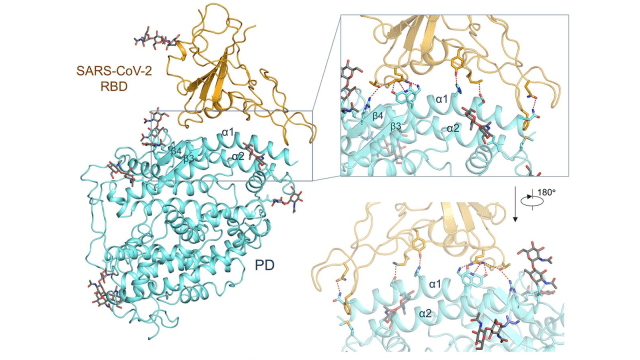As countries attempt to contain the spread of the disease COVID-19 and the accompanying virus, SARS-CoV-2, scientists have produced a high-resolution image of how the virus attacks cells.
The new coronavirus shares around 80 per cent of its genome with SARS-CoV, the virus behind the 2003 SARS outbreak, and it attacks the same cellular receptor, called Angiotensin-converting enzyme 2 (ACE2). By imaging the protein in action with and without the new coronavirus attached, the team of scientists, led by researcher Renhong Yan at the Westlake Institute for Advanced Study in Hangzhou, China, hope to further understand how it recognises and infects our cells.
As with other high-resolution imaging studies, this research relies on cryo-EM (cryo-electron microscopy) to create images of the virus in action at the atomic scale. The scientists concentrate the virus and protein, then cool it with a liquid that freezes the system in its tracks. Finally, they hit the samples with electrons to create lots of 2D projections, which they can combine into the full image.
[referenced url=” thumb=” title=” excerpt=”]
The researchers focused on the cellular membrane protein ACE2, which is found in the lungs, heart, kidney, and intestines. Normally, ACE2 helps put the final touches on a hormone that helps to control the constriction of blood vessels and blood pressure and helps shuttle an amino acid transporter across the membrane, but it’s also the target of viruses like SARS. Recently, another cryo-EM study showed that a protein on the new coronavirus, called its spike protein, has an even higher affinity for the ACE2 protein than SARS did (which might be why COVID-19 is so contagious). But scientists haven’t fully characterised ACE2’s structure yet.
The high-resolution views of these structures revealed aspects of SARS-CoV-2 that might explain why it binds to these proteins with higher affinity than SARS does, down to the specific amino acids in charge of the interaction.
Ultimately, scientists hoping to cure or prevent COVID-19 will use these high-resolution studies to help design therapies that can foil the virus as it attempts to bind to our cells.
This paper was published today in Science.
